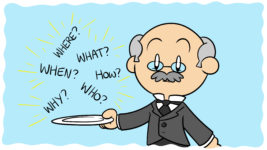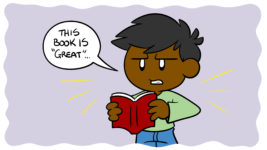Once upon a time, in a grand castle in the heart of medieval Europe, there was a fair maiden by the name of… Tiffany. Wait, what? Don’t you mean ‘Guinevere’ or something?
Recently, I outlined the literary problems posed by anachronisms – details that don’t belong in a historical period, like an Edwardian courtier getting a call on his iPhone. We discussed how to avoid anachronisms, how to tell the difference between dangerous anachronisms and those the reader will forgive, and how to use research to immerse yourself in a time period. What we didn’t discuss was what you can do when your well-researched historical fact just doesn’t feel realistic.
This is a phenomenon that author Jo Walton has termed ‘the Tiffany problem.’ You see, ‘Tiffany’ was, in fact, a popular medieval name, but it feels so contemporary that if you used it in medieval fiction, many readers would think you’d made an obvious, even silly, mistake.
The Tiffany problem emerges from the difference between our simplified modern understanding of various time periods and the complex, messy societies they actually describe. So, what are you supposed to do when your research is telling you that Olympians had sponsorship deals, gladiators had action figures modeled after them, ancient statues were painted in gaudy colors, or that somebody in the late 13th century might have worn glasses? That’s the question we’ll be answering today, as we tackle how to reconcile these inconvenient historical facts with compelling, believable fiction.
Determining your purpose
How you approach the Tiffany problem will vary greatly depending on your intentions, so you should begin by identifying your goal.
If there is a particular time period that you love and wish to rescue from misrepresentation, your intention in writing the book may be, at least in part, re-education. If you have a deep personal investment in the era, a completely honest portrayal may be important to you. It’s easy to imagine why James Jones prioritizes accuracy in The Thin Red Line, since he served in the battles he’s writing about.
If accuracy is a major priority for you, you’re going to want to check out the strategies below for integrating asynchronous details in a way that readers will believe and appreciate.
On the other hand, it may be that your research has unearthed some quirky facts about your chosen time period that just seem like they’d be fun to include.
Let’s take a look at another name that sticks out like a sore thumb: Candace. Envision two writers digging into first-century Greece to support their current projects. The writer of creative nonfiction may need to explain how one of her main characters, a real person, happened to be named ‘Candace’ in the year 97CE. The writer of historical fiction would probably do better to just pick a different name.
Unless there is some comedic or avant-garde reason for shoehorning this name into the book – I’m thinking the literary equivalent of A Knight’s Tale here – why bother? Details that feel anachronous lose readers. Setting aside arbitrary details in favor of a coherent tone may be the smarter choice for you.
In some cases, the details may not be arbitrary. You may have uncovered some little-known truth about a certain time in a certain place, and you can’t write your book honestly without disclosing that truth. You’re happy to name your medieval ladies ‘Cecily’ or ‘Beatrice,’ but wanting to convey a vivid and true-to-history setting, you don’t feel right about pretending that everybody was dirty at that time. Your research tells you that soap was brought over from the Orient and people brushed their teeth with twigs or fabric, often finishing with herbal mouthwashes. Given their low-sugar diet and regular brushing, medieval folks had less tooth decay than the average person in the age of Listerine and plastic bristles.
The extent to which you include information like this is a personal choice. Some authors (and most filmmakers) choose the imagery that people are familiar with, rather than trying to forcibly re-educate them. For others, authenticity is more important. If your motives are pure (that is, you’re not naming your character ‘Tiffany’ just because you can and to heck with anybody who doesn’t like it), you shouldn’t have to choose between what feels authentic and what is authentic. Let’s take a look at some ways to get the best of both worlds.
Integrating your Tiffanies
Authors of creative nonfiction: your job ought to be a little bit easier. Use the foreword and even footnotes to prepare the reader for anything they might otherwise doubt.
Fiction writers: footnotes are ungainly. So are coerced explanations. Nobody enjoys a love story like this: Boy meets girl. Boy learns girl’s name is ‘Tiffany.’ Boy says, ‘What a lovely and unusual name.’ Girl says, ‘Yes, it’s Greek. It means incarnation.’ Reader says, ‘This book is stupid, I’m not finishing.’
There may be ways to justify unexpected details in-text, but this will require careful integration. If you want to talk about ancient Persian air-conditioning technology, you may want to have some characters who are in the right social class to have access to such technology and others who are not, using the disparity to justify mentioning it at all.
If the material is really surprising – say, vending machines or syringes in the first few years of the Common Era – consider attaching a social stigma to the inventor or users of such things. Heron’s model for a vending machine wasn’t replicated until the 19th century, so however useful his inventions may have been, people must have thought Heron was a bit of a weirdo. That’s not an insult; beloved characters have been a bit odd all the from Edward Scissorhands to Hugo.
If you have a lot of material you want to incorporate, you might designate a nerdy character whose voice, either through dialogue or narration, can represent some of the backstory on things that might surprise readers.
When setting details are integral to your entire plot, you could consider introducing them in a foreword, but let’s be real honest about two things: most people skip or skim fiction forewords and – more importantly – wouldn’t it be better if you didn’t have to?
When details feel out of place, it may be because the reader hasn’t fully entered the world of the novel. People may accuse The Name of the Rose of inaccessibility and Melvillian loquaciousness, but nobody could ever find a detail out of place. Eco’s painstaking attention to historical accuracy transports readers to 14th-century Italy so vividly that they’d believe him if he said monasteries, despite the biblical mandates against cloven-hooved, non-cud-chewing livestock, kept barrels of pigs’ blood on their back porches in winter. Oh wait… he did that. Why does Umberto Eco’s book feel so authentic? Because it is authentic. Most of the time, the best way to include ‘Tiffany’-type details in organic ways is to become so intimately acquainted with your setting that everything you write is an organic outcropping of that intense familiarity.
Go lightly
Constantly reappraise whether certain details are worth including, and don’t be afraid to scrap material that isn’t. Realism can encourage reader engagement, but it’s not much of a virtue by itself. In the end, the setting you want is the one that has readers reflecting, ‘How could it have been any other way?’
Have you ever encountered something in a book that didn’t seem real but was? How did the author handle it? Have you run into any Tiffany problems of your own? I’d love to hear from you in the comments, and be sure to check out Alternate History Fiction: 3 Useful Rules You Should Know and The Gothic Secrets Every Steampunk Writer Should Know for advice on ‘historical’ writing that doesn’t care quite so much about the facts.






2 thoughts on “How You Can Overcome The Tiffany Problem In Your Writing”
Hello,
Can you provide reference to this medieval queen that you’re referring to? I can’t find any queen/noblewoman by this name on http://www.thepeerage.com
I just experienced the Tiffany Problem myself as an author. An avid reader of historical fiction accused my 11th-century historical fiction of having anachronistic names… to the point she refused to read it. I chose `modern-sounding’ names to resonate with my YA audience but they were grounded in historical fact- either names straight from the 1086AD Domesday Book (written 11 years after the events of my novel), or names rooted in Old English, Old French, the Bible or from bishops and saints who lived before the 11th century.
These names just sound modern… because we liked them and continue to name our offspring these names.
It`s too late to write it into my author`s note (the book`s published) but I made a blog post about the issue.